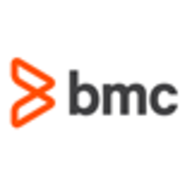


BMC Cloud Lifecycle Management and Red Hat CloudForms are competing in the cloud management category. Red Hat CloudForms appears to have an edge due to its comprehensive features that prioritize advanced functionalities.
Features: BMC Cloud Lifecycle Management offers automation, the ability to integrate with various third-party tools, and scalability. Red Hat CloudForms provides strong multi-cloud management capabilities, enhanced security features, and excellent integration within existing Red Hat environments.
Room for Improvement: BMC Cloud Lifecycle Management could enhance its multi-cloud portal features and improve user interface simplicity. Additional support for more cloud environments would also be beneficial. Red Hat CloudForms could work on shortening its deployment process and simplifying the learning curve for new users. Enhancing integration with non-Red Hat platforms could be another area of focus.
Ease of Deployment and Customer Service: BMC Cloud Lifecycle Management facilitates quicker adaptation with its streamlined deployment and proactive customer support. Red Hat CloudForms, in contrast, requires a more involved deployment process but offers extensive documentation and community support. While BMC simplifies initial setup, Red Hat provides comprehensive resources.
Pricing and ROI: BMC Cloud Lifecycle Management features competitive pricing with a focus on delivering quick ROI for large-scale implementations. Red Hat CloudForms may have higher initial costs but compensates with long-term ROI through its advanced capabilities and integration ease, aligning with its enhanced value for comprehensive needs.


IBM Turbonomic offers automation, planning, and right-sizing recommendations to streamline resource management, improve efficiencies, and optimize costs across virtualized environments and cloud platforms.
IBM Turbonomic is valued for its capability to optimize resource allocation and monitor virtual environments efficiently. It facilitates automated decision-making in VM sizing, load balancing, and cost optimization for both on-premises and cloud deployments. Users can leverage insights for workload placement, ensure peak performance assurance, and effectively right-size across VMware and Azure. The ongoing transition to HTML5 aims to improve visual and navigational ease, while expanded reporting features are anticipated. Opportunities for improved training, documentation, and integrations enhance platform usability and functionality.
What Are the Key Features?In finance, IBM Turbonomic aids in maintaining platform efficiency during market fluctuations. Healthcare organizations leverage its capability for resource optimization during high-demand periods to enhance patient care support. Retailers use it for planning in peak seasons, ensuring resources align with fluctuating demand to maintain performance continuity.
Manage container, virtual, private, and public cloud infrastructures
Managing a complex, hybrid IT environment can require multiple management tools, redundant policy implementations, and extra staff to handle the operations. Red Hat® CloudForms simplifies IT, providing unified management and operations in a hybrid environment.
As your IT infrastructure progresses from traditional virtualization toward an Infrastructure-as-a-Service (IaaS) model, CloudForms evolves, protecting your investments and providing consistent user experience and functionality.
We monitor all Cloud Management reviews to prevent fraudulent reviews and keep review quality high. We do not post reviews by company employees or direct competitors. We validate each review for authenticity via cross-reference with LinkedIn, and personal follow-up with the reviewer when necessary.